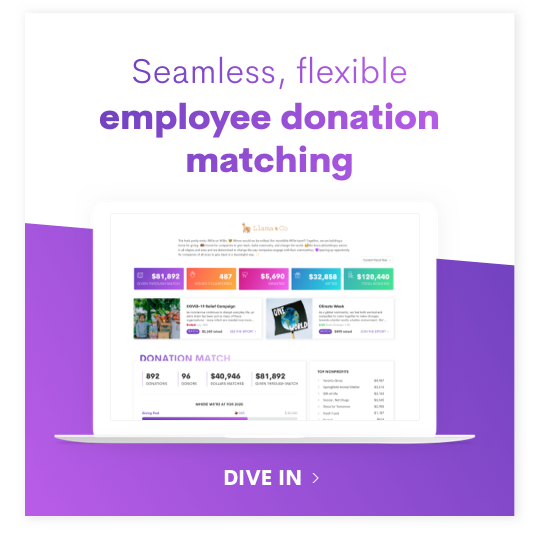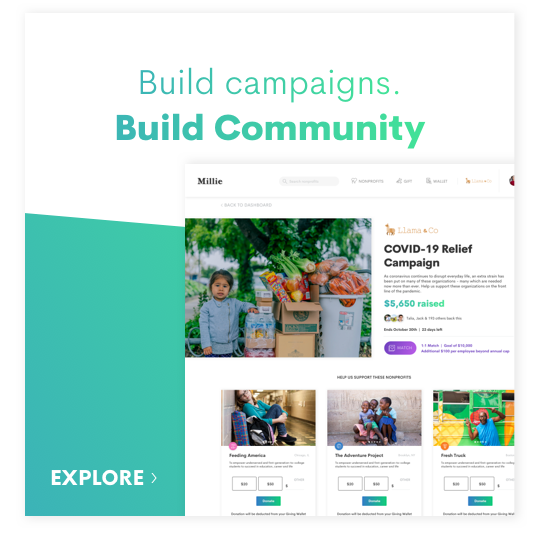10 ESG REPORTS FROM POPULAR COMPANIES
From your company’s internal culture and social impact to its environmental and governmental initiatives, releasing an extensive ESG report annually is becoming standard with some of the world’s leading companies. An ESG disclosure is all about transparency and accountability.
A comprehensive ESG report should be easy to navigate and include metrics and initiatives that are useful to and resonate with your audience. For your stakeholders or potential investors, corporate sustainability, financial performance, and corporate strategy might be of particular interest. Climate-related risks and business strategies can help employees do their jobs while a company’s carbon footprint is becoming increasingly important to consumers. Senior management typically works off stakeholder engagement to determine the most sensitive information.
With regulatory systems continuing to grow and change, ESG reports can take many forms, including, but not limited to, financial reporting, case studies, energy consumption, and decarbonization percentages and strategies. Many companies are appointing their audit committee or hiring an outside third party.
Here are a few ESG reports from leading companies, broken down for you, and a few internationally recognized reporting standards that many adhere to.
Starbucks
Starbucks has been a purpose-driven company for many years, posting their first Corporate Social Responsibility report 20 years ago. Today, their 69-page Global Environment & Social Impact Report focuses on 3 key elements: People, Planet, and Governance.
People
Starbuck’s Greener Apron course, a course designed to give partners the tools they need to champion sustainability, received over 38,000 enrollments in 2021. Through the Starbucks College Achievement Plan, 2,500 partners earned their college degree with 100% tuition coverage.
Planet
Starbucks has committed to reduce their carbon, water and waste footprints in half by 2030. Their strategies for change include: expanding plant-based menu options, shifting away from single use to reusable packaging, investing in regenerative agriculture, reforestation, forest conservation and water replenishment in their supply chain, investing in better ways to manage their waste, and innovating to develop more sustainable stores, operations, manufacturing and delivery.
Governance
Starbucks was recognized by Ethisphere as one of the World’s Most Ethical Companies for the 14th year. In FY21, they incorporated a new set of measurements into their executive compensation programs focused on sustainability and building inclusive and diverse teams, which resulted in the increase of the individual performance factor (IPF) of the Annual Incentive Bonus Plan from 30% to 50% of the overall payout calculation.
NIKE
A 184-page annual report entitled Breaking Barriers had easy-to-read balance sheets throughout the presentation. Some of Nike’s ESG topics and initiatives include prioritizing mental health & creating opportunities for women and girls. In its efforts to battle climate change by reducing energy consumption, John Donahoe (Nike’s President & Chief Executive Officer) says,” They will be designing products with circularity in mind, giving new life to worn footwear and apparel, and collaborating across the industry to reduce our collective footprint.”
In 2001, Nike’s workforce comprised 50% women and 43% in higher leadership positions. Both of these percentages increased from the previous year. It continued last year’s 100% pay equity percentage across all employee levels annually.
By 2025, Nike plans on a 70% absolute reduction of greenhouse gas emissions. In 2021, its metric tons of CO2e will be reduced to 119. Nike’s report includes its waste by unit and freshwater usage/restoration.
For the continued Covid-19 pandemic support, Nike expanded their sick leave policy, providing “two regularly scheduled work weeks of paid sick leave for those experiencing symptoms associated with COVID-19.” 90% of employees said they were satisfied with the benefits they were provided with.
GoTo
GoTo keeps teams connected by offering simple business communication tools. Their Environmental, Social, and Governance program incorporates the same principals that they stand for: bringing people together, facilitating collaboration, and creating shared understanding.
In 2021, their team of more than 3,500 global employees gave back to over 190 organizations and enabled customers to avoid over 39 million metric tons of greenhouse gas emissions through the use of their products. 2021 was also the inaugural year of the Diversity, Equity, and Inclusion program.
BP
BP, one of the world’s largest oil companies, is transitioning to an integrated energy company. Due to this process, their report did not include all information from the previous year. This information is from their sustainability report.
BP’s sustainable development goals include getting to Net Zero, Improving People’s Lives, and Caring for the Planet. Getting to Net Zero is broken down into two subcategories that specify BP’s climate action, enhancing people’s lives with cleaner energy and sustainable livelihoods and enhancing biodiversity to help the planet. BP reduced its methane use by 0.05% and increased its net zero operations to 35% from 16% in 2019.
As a part of BP’s fair wage and remuneration initiative, they teamed with the Fair Wage Network to increase their understanding of their definitions of fair wages to benchmark against its extensive fair and living wage database. They also grew their preferred diverse suppliers from around 280 to 370. A diverse supplier is defined as using a more profitable company that is 51% owned by women, a member of the LGBT+ company, veteran-owned, or differently abled.
National Grid
National Grid is an energy company that operates in the US and the UK. National Grid’s governance is committed to 54% Board diversity, and its code of ethics sets out reporting frameworks, policies, and structures. Ethics training was completed by over 95% of colleagues last year. They had a 65% reduction in Scope 1 & 2 carbon emissions. Their goals are to achieve 37.5% by 2034 with the expansion of energy efficiency and demand-side management programs.
Energy Recovery
In 2021, Energy Recovery released its first GHG emissions report as a part of a recommendation from the TCFD, the sustainability accounting standards board. They determined their short-term, medium, and+ long-term goals and opportunities for climate-related risks using a third-party audit of all manufacturing locations. They aim to develop a workforce to deliver sustainable growth. Their baseline retention set in 2020 was 94% which decreased to 91% in 2021.
ER’s key areas include hazard reporting: creating a safe & healthy environment with a current zero fatality rate, and community engagement. Under their disaster relief pillar, they donated to the Haiti Earthquake Relief Fund. In its efforts to continue diversifying its board, its senior management comprises 43% women and 29% people of color.
Amazon
Amazon’s key goals include transforming operations, contributing to a more equitable society, and activating collective impact. Amazon has invested $2 billion in the Climate Pledge fund to support the development of sustainable technologies, the average starting wage of one of their employees is $18, and they have reduced per-shipment packaging weight by 38%.
By 2030, Amazon aims to make 50% of their shipments net-zero carbon.
Apple
Since April 2020, Apple has achieved carbon neutrality for its corporate emissions by sourcing 100% renewable electricity for its facilities. Its ESG performance reduces overall emissions by 40% and maintains pay equity. Apple has specifically set out the rights of its team members in its Human Rights Policy which takes guidance from the United Nations Principles. They have trained 23.6 million of its supplier employees on their rights and surveyed 352,589 people on their workplace experiences to continue support and growth.
General Motors
General Motors’ ESG strategy begins with human capital. With a workforce of 146,000, 11 resource groups, and six global diversity, equity, and inclusion councils, General Motors believes the long-term value it will create is 2.9 million training hours, a little over 10,000 salary promotions, and 4,000 jobs. Their board of directors averages 31% people of color or ethnically diverse and 54% women. Their local sourcing for its supply chain increased to 92% from its previous 90%.
Best Buy
Best Buy is helping local communities by donating $145 million to St. Jude’s Hospital. Their values include creating a more equitable work environment by investing $10 million into Black, Latinx, and Indigenous tech start-ups through their Brown Venture Group. They have reduced carbon emissions by 62% and water waste by 24%. Best Buy’s solar developments are expected to produce 1.5 MWh of clean electricity through their renewable energy initiative.



